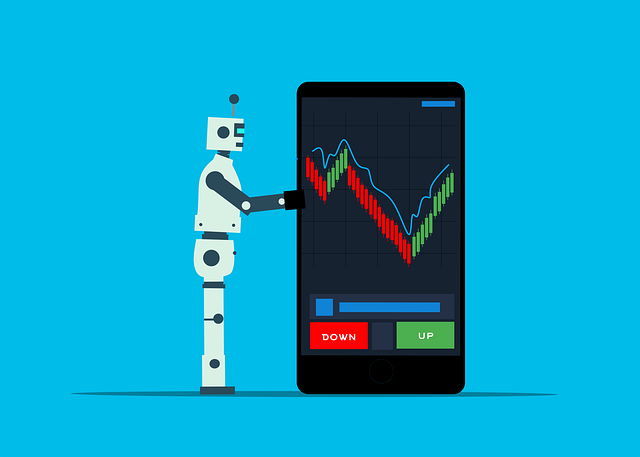AI Forex Trading Bot Review: An In-Depth Analysis for Traders
Author: Jameson Richman Expert
Published On: 2025-08-06
Prepared by Jameson Richman and our team of experts with over a decade of experience in cryptocurrency and digital asset analysis. Learn more about us.
The rapid evolution of artificial intelligence (AI) has profoundly transformed various sectors, with finance and forex trading standing out as key beneficiaries. AI-driven forex trading bots now offer traders the ability to execute trades with unparalleled speed, precision, and emotionless consistency that human traders often find challenging to maintain. As a seasoned trader with over a decade of experience navigating the complexities of financial markets, I have witnessed firsthand the potential and pitfalls of integrating AI trading bots into a comprehensive trading strategy. This detailed review aims to provide a thorough understanding of AI forex trading bots, emphasizing critical considerations, platform options, technical insights, and best practices to maximize your trading success.

Understanding AI Forex Trading Bots: Core Concepts and Technologies
An AI forex trading bot is an advanced software system that leverages cutting-edge artificial intelligence algorithms, machine learning (ML), natural language processing (NLP), and big data analytics to automate trade execution and management. These bots analyze vast datasets—such as historical price movements, order book data, economic indicators, geopolitical news, and social sentiment—to identify high-probability trading opportunities aligned with predefined or adaptive strategies. The core components include:
- Data Collection & Processing: Real-time streaming and historical data are ingested, cleaned, and normalized to ensure accuracy and consistency. This step involves handling missing data, filtering out noise, and scaling features for machine learning models. High-quality data sources, such as Bloomberg, Reuters, or specialized forex data providers, significantly impact model performance. Incorporating alternative data sources—like sentiment analysis from social media platforms (Twitter, Reddit), news feeds, and macroeconomic releases—can provide a competitive edge by capturing market sentiment shifts before they are reflected in price action.
- Pattern Recognition & Prediction: Sophisticated ML models—such as neural networks, random forests, gradient boosting machines, and reinforcement learning agents—analyze data to detect patterns, trends, and anomalies. Deep learning techniques, including Long Short-Term Memory (LSTM) networks, excel at capturing temporal dependencies and nonlinear relationships in market data. These models generate predictive signals that inform trade entries and exits, often combined with feature engineering techniques to enhance model robustness.
- Trade Execution & Management: Once a signal is generated, the bot executes orders automatically via secure API connections to brokers. It manages trades through risk mitigation tools like stop-loss, take-profit, trailing stops, and hedging mechanisms to optimize outcomes and control exposure. Implementation of advanced order types—such as fill-or-kill, iceberg, or conditional orders—can further refine execution efficiency, especially in volatile conditions. Some platforms employ smart order routing to minimize slippage and improve fill rates.
- Learning & Adaptation: Continuous retraining of models using recent data ensures the bot adapts to shifting market regimes, reducing model obsolescence and improving predictive accuracy over time. Techniques like online learning, reinforcement learning, and transfer learning allow the bot to improve strategies dynamically based on real-world performance feedback. Incorporating ensemble methods—combining multiple models—can increase resilience across different market conditions, reducing the risk of overfitting to specific datasets.
While the allure of high-frequency, emotionless trading is compelling, it is crucial to understand that the success of an AI trading bot heavily depends on the quality of its algorithms, the integrity of data inputs, and proper configuration. Many traders, including myself, initially overestimated bots’ capabilities, leading to losses caused by poorly optimized strategies or unforeseen market volatility. Therefore, a deep understanding of the underlying AI technology, coupled with active oversight and rigorous testing, remains essential for sustained success.
Platform Selection: Critical Factors and Top Providers
Selecting a reliable trading platform is foundational to deploying effective AI forex trading bots. Here are essential factors to consider:
- Security & API Integration: The platform should support secure API keys with permissions management, two-factor authentication (2FA), and encrypted data transfer to safeguard assets and sensitive information. Robust security protocols—such as SSL encryption, IP whitelisting, and withdrawal restrictions—are vital to prevent unauthorized access and potential breaches. Additionally, platforms should support RESTful and WebSocket APIs for real-time data streaming and order execution, enabling low-latency operations essential for high-frequency strategies.
- Market Access & Liquidity: Compatibility with major forex brokers and access to high liquidity pools are vital for executing large orders without significant slippage. Deep order books from Tier-1 liquidity providers facilitate efficient trade execution, especially for strategies involving multiple concurrent positions or large volume trades. Consider platforms that support multiple brokers or aggregation services to diversify execution venues and improve fill quality.
- Backtesting & Simulation: Advanced simulation environments allow you to rigorously test strategies against historical data, including stress testing under various market scenarios. Features such as walk-forward analysis, Monte Carlo simulations, and forward testing are critical to validate robustness before live deployment. High-resolution tick data, bid-ask spreads, and realistic order execution modeling enhance backtest accuracy, reducing the gap between simulated and real trading results.
- Community & Support: Active user communities, comprehensive documentation, and responsive customer support facilitate troubleshooting, strategy optimization, and staying updated with platform enhancements. Platforms with active forums, developer SDKs, and open-source integrations often provide valuable insights, shared strategies, and collaborative problem-solving opportunities.
Reputable Platforms for AI Forex Trading Bots
- Binance: Register here. Known for its extensive API support, high liquidity, and comprehensive trading tools, Binance offers a robust infrastructure for deploying AI bots. Its API supports popular frameworks such as Zenbot, Gekko, and custom AI algorithms. Implementing security measures like IP whitelisting, withdrawal restrictions, and API key permissions is critical for asset protection. Binance also provides access to a wide range of trading pairs, margin trading, futures, and options, which can be leveraged by sophisticated AI strategies for diversification and hedging.
- MEXC: Sign up here. MEXC offers a user-friendly interface, diverse crypto pairs, and competitive fee structures. Its API supports algorithmic trading and is suitable for deploying adaptive AI-driven strategies, especially in volatile markets where rapid execution and dynamic adjustment are essential. MEXC also provides features like staking, lending, and advanced order types to support complex strategies.
- Bitget: Join Bitget. Known for advanced trading features, including copy trading, futures, and options, Bitget supports integration with AI algorithms that facilitate diversification and hedging strategies. Its transparent fee structure, multi-asset support, and active community support make it attractive for traders seeking reliable automation. The platform also emphasizes security, with features like multi-signature wallets and cold storage options.
- Bybit: Register with Bybit. Bybit offers a sophisticated platform with AI integration options, educational resources, and high leverage trading. Its API allows for custom AI bot deployment, and its focus on security (such as cold storage and encrypted API keys) ensures a safe trading environment. Bybit’s dynamic trading environment—supporting perpetual contracts and spot trading—makes it suitable for implementing complex AI strategies that require rapid adjustments and high leverage.
Technical Insights and Strategy Optimization
Implementing AI forex trading bots effectively necessitates understanding several technical aspects that influence performance and robustness:
Backtesting and Paper Trading
Prior to live deployment, comprehensive backtesting against historical data helps identify potential weaknesses, optimize parameters, and refine strategies. Advanced platforms support walk-forward analysis, Monte Carlo simulations, and stress testing to evaluate robustness under various market conditions. Incorporating high-quality, tick-level data—preferably with bid-ask spreads and slippage models—is crucial for realistic performance estimation. Additionally, paper trading—simulated trading environments—allows real-time strategy validation without risking capital, providing valuable feedback loops for adjustments. Regularly updating data sources and ensuring data integrity are vital for meaningful backtests.
Risk Management & Position Sizing
A common pitfall among traders is overleveraging or neglecting risk controls. Effective risk management strategies include:
- Implementing stop-loss and take-profit orders tailored to market volatility, such as ATR-based stops or volatility-adjusted limits.
- Using trailing stops to lock in gains during trending markets, dynamically adjusting as the market moves.
- Applying position sizing algorithms—like the Kelly Criterion, fixed fractional, or volatility-based sizing—to optimize trade size relative to account balance and risk appetite.
- Setting maximum drawdown thresholds and daily loss limits to prevent catastrophic losses and preserve capital during adverse events.
Market Adaptability & AI Learning
Markets are inherently dynamic, with frequent regime shifts caused by macroeconomic changes, geopolitical events, or sudden sentiment shifts. Successful AI bots incorporate techniques like reinforcement learning, online learning, and transfer learning that enable models to retrain or fine-tune periodically based on new data. These adaptive methods help mitigate issues caused by trend reversals or unexpected shocks, ensuring strategies remain relevant and profitable over time. Combining multiple models—ensemble methods—can also enhance robustness across different market regimes, reducing vulnerability to specific market conditions.

Common Pitfalls and How to Avoid Them
- Overfitting Strategies: Excessive optimization to historical data can result in models that perform poorly in live markets. Use techniques such as cross-validation, out-of-sample testing, regularization, and walk-forward optimization to prevent overfitting. Avoid overly complex models that capture noise rather than signal.
- Ignoring Market Conditions: Not all strategies are effective in every market environment. Diversify your algorithm portfolio to include trending, ranging, and volatility-based strategies. Use regime detection algorithms to adapt or switch strategies based on current market conditions.
- Underestimating Latency & Slippage: Infrastructure latency can significantly impact trade execution, especially in high-frequency contexts. Use low-latency servers, colocated infrastructure, or VPS hosting near exchange data centers. Incorporate slippage estimates into profit calculations to set realistic expectations and optimize order routing.
- Relying Solely on Automation: Human oversight, particularly during major news releases or black-swan events, can prevent substantial losses. Maintain a hybrid approach—use AI insights as a supplement to fundamental analysis and judgment. Establish alert systems for unexpected market movements or system failures to intervene promptly.
Integrating AI Bots into a Holistic Trading Strategy
AI trading bots are powerful tools but achieve their full potential when integrated into a diversified trading approach. This includes combining automated signals with manual analysis, macroeconomic insights, and disciplined risk management. Regular review of bot performance, engaging with trading communities, and staying informed about technological and regulatory developments can significantly enhance outcomes. Maintaining a detailed trading journal—tracking strategy modifications, performance metrics, and contextual market factors—provides valuable feedback for continuous improvement.
Conclusion: Navigating the Future of AI in Forex Trading
My journey with AI forex trading bots underscores the importance of ongoing education, diligent testing, and cautious deployment. While AI automation can significantly enhance trading efficiency and profitability, it is not a substitute for experience, intuition, and prudent risk management. As the technology continues to evolve—driven by advances in deep learning, cloud computing, and big data analytics—staying informed through reputable sources, engaging with active trading communities, and continuously refining your strategies will be critical to maintaining an edge in this competitive landscape.
Remember: the key to success in AI forex trading is a balanced approach—leveraging automation for speed and data analysis while maintaining human oversight for strategic judgment. With meticulous platform selection, deep technical understanding, and disciplined risk management, you can harness AI to elevate your forex trading endeavors to new heights, navigating the complexities of modern markets with confidence.